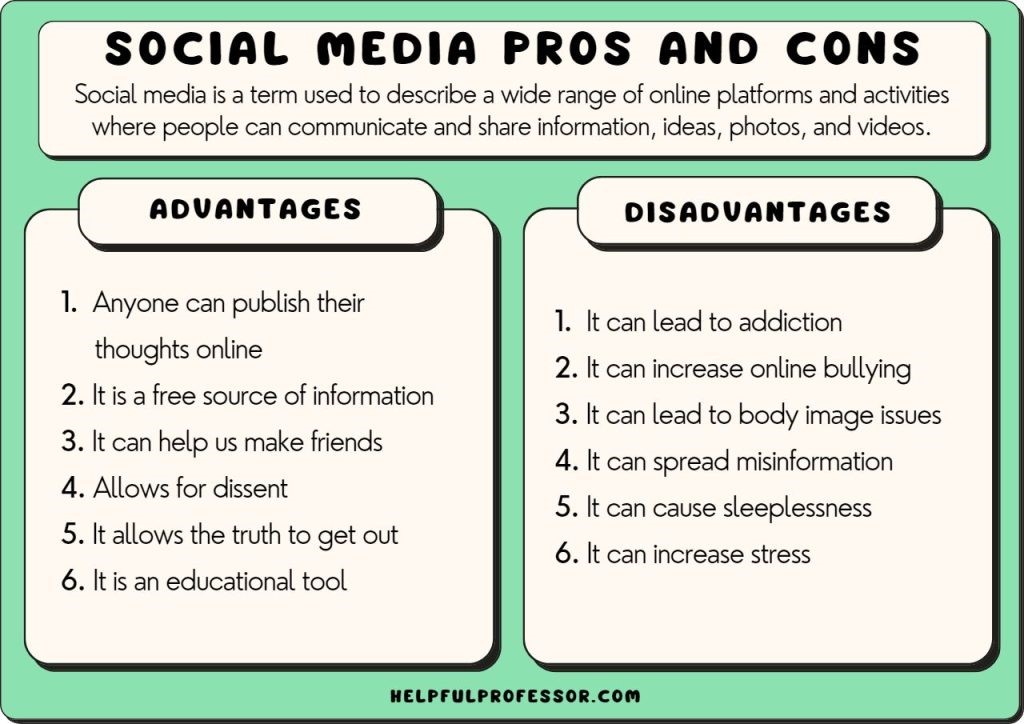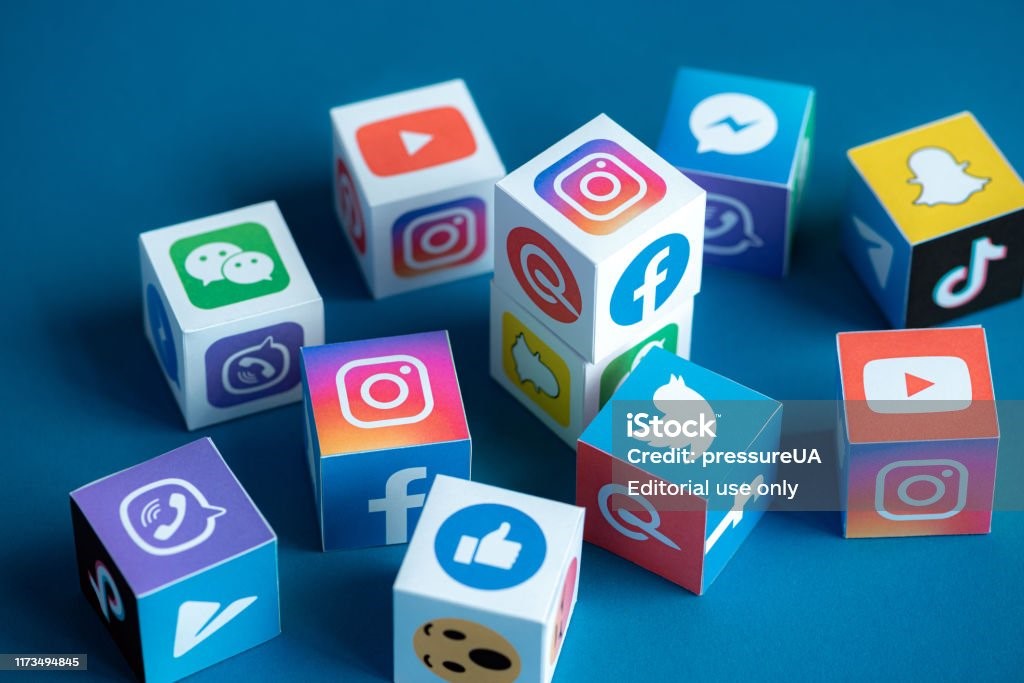- Analytically Criticize social media
‘Social media” refers to a broad range of online activities and venues where individuals can interact and exchange knowledge, concepts, thoughts, images, and videos. All the things in the world have few pros and cons attached to it. While there is a lot to offer with the inception of social media there are few areas where it lacks.

(Viktoriya Sus, MA, 2023)
The Goods:
(Kaya and Bicen 2016) reported that if it is properly managed, social media can become a great source for students to achieve better grades. In the twenty-first century, online professionalism is also a priority for teachers who use Facebook. With mindfulness of its side effects, if properly managed, social media may boost students’ academic success and teachers’ professionalism. Accordingly, students and other stakeholders may benefit from social media for better results.
The Bads:
According to (Patton et al. 2016) Excessive social media use has a number of negative consequences and uncertainties, including peer humiliation, cyberbullying, depression, loneliness, and academic volatility. According to several research, social media has a considerable negative impact on students’ educational, emotional, and psychological well-being, particularly among teenagers.
When the benefits of social media are weighed against the risks, some experts suggest that the drawbacks outweigh the benefits. These risk behaviors can be categorized into three categories: personal, academic, and emotional. (Ahn 2011)
2. How social media has provided benefits to the health and well-being industry?
Health providers can utilize social media to tell patients about the findings of their examinations, encourage medication adherence, obtain patient feedback about their health services, and collect information from patients after discharge to inform future practices. Encouragement of social media interactions between health practitioners and patients may promote both patients’ well-being and patient-physician relationships. Furthermore, social media can be utilized to deliver medical services such as appointments, medical inquiries, personal information management, and medical charge payment, which can improve patient experiences and increase access to medical treatment. (Shen L, 2021)
Social media can be used by health professionals and researchers for professional development purposes such as learning, cooperation, and career promotion. Social media can be used to collaborate on research projects and practices, access, and share trending research findings and medical knowledge, broaden their exposure to funders and publishers, conduct a job search, remotely follow medical conferences, market their team and services, and discuss interesting or difficult cases with colleagues. (Loeb S, 2020)
3. How does social media focus ideally on tools and technology?

(Kyiv, Ukraine, 2019)
- User-Friendly Interfaces: Social media platforms prioritize user-friendly interfaces that facilitate the creation and sharing of content. They use technology to create user-friendly layouts, navigation, and functionality that encourage user interaction.
- Mobile Accessibility: The majority of social media platforms are optimized for mobile devices, employing mobile technology to ensure that users can smoothly access and interact with the platforms from their smartphones and tablets.
- Integration of Multimedia Tools and Technologies: Social media platforms have incorporated a variety of multimedia tools and technologies to allow users to post images, videos, and other rich media material.
- Algorithms and artificial intelligence: Algorithms and artificial intelligence play an important role in social media by tailoring content feeds and making suggestions to users. To deliver appropriate content, these systems assess user behavior, preferences, and engagement patterns.
Referencing:
- Ahn J. The effect of social network sites on adolescents’ social and academic development: current theories and controversies. Journal of the American Society for Information Science and Technology. 2011;62(8):1435–1445. doi: 10.1002/asi.21540.
- Kaya T, Bicen H. The effects of social media on students’ behaviors: Facebook as a case study. Computers in Human Behavior. 2016;59:374–379. doi: 10.1016/j.chb.2016.02.036.
- Kyiv, Ukraine, 2019 https://www.istockphoto.com/photo/social-media-apps-logotypes-printed-on-a-cubes-gm1173494845-325964651
- Loeb S, Carrick T, Frey C, Titus T. Increasing social media use in urology: 2017 American Urological Association Survey. Eur Urol Focus. 2020 May 15;6(3):605–608. doi: 10.1016/j.euf.2019.07.004. doi: 10.1016/j.euf.2019.07.004.
- Patton DU, Eschmann RD, Elsaesser C, Bocanegra E. Sticks, stones and Facebook accounts: what violence outreach workers know about social media and urban-based gang violence in Chicago. Computers in Human Behavior. 2016;65:591–600. doi: 10.1016/j.chb.2016.05.052.
- Viktoriya Sus, MA, 2023 https://helpfulprofessor.com/social-media-pros-and-cons/?mab_v3=20170#molongui-disabled-link
- Shen L, Wang S, Chen W, Fu Q, Evans R, Lan F, Li W, Xu J, Zhang Z. Understanding the function constitution and influence factors on communication for the wechat official account of top tertiary hospitals in china: cross-sectional study. J Med Internet Res. 2019 Dec 09;21(12):e13025. doi: 10.2196/13025. https://www.jmir.org/2019/12/e13025/